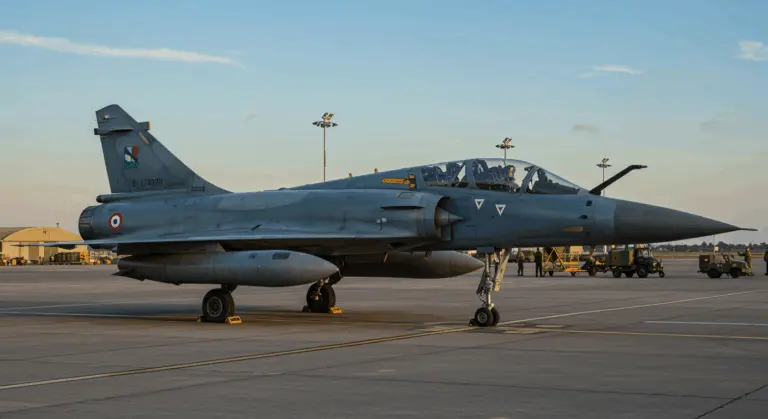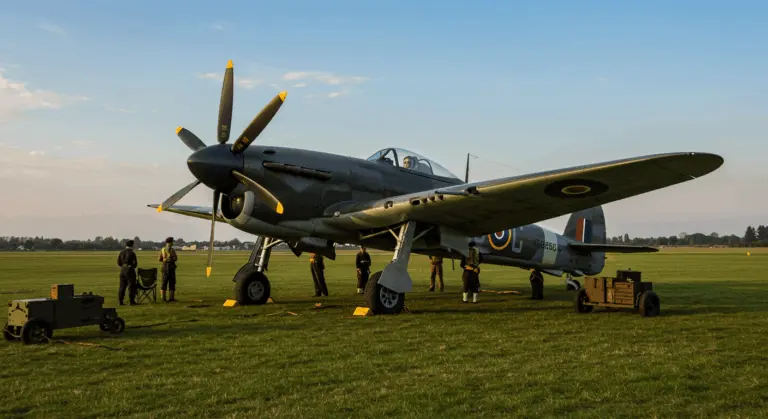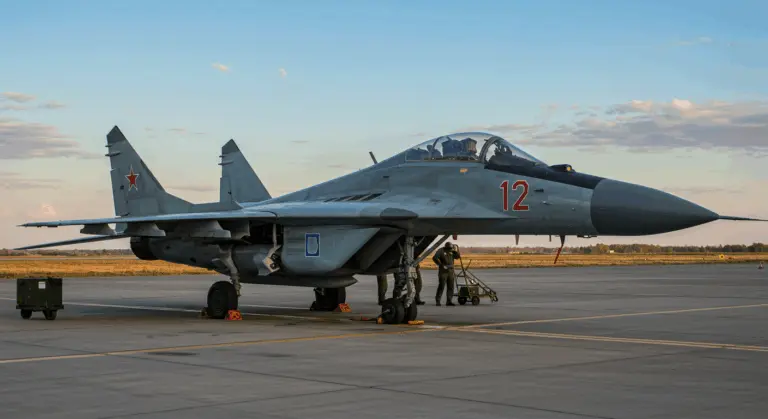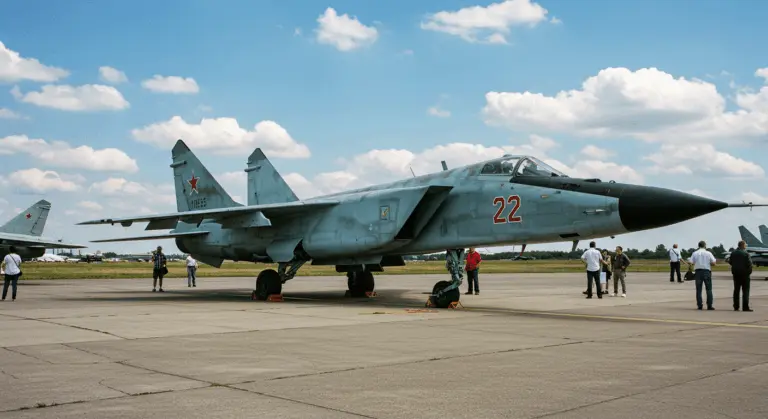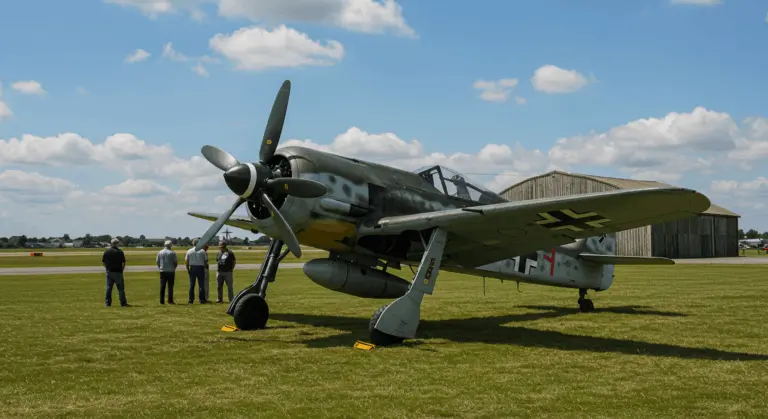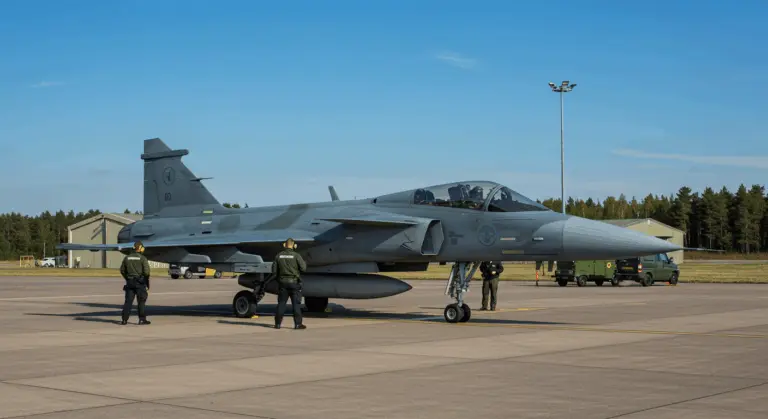Overview of the MiG-23 Fighter Jet
The Minoan-Gurevich MiG-23 (NATO reporting name: ‘Flogger’) stands as a pivotal Soviet-era variable-geometry fighter, born from the intense technological rivalry of the Cold War. This third-generation jet fighter marked a significant advancement for Soviet military aviation—a major step forward that placed it alongside formidable contemporaries like the Su-17 ‘Fitter’.
At its core a fighter-interceptor with potent ground-attack capabilities, the MiG-23 emerged as a remarkably versatile platform. The aircraft’s swing-wing design provided exceptional adaptability across diverse flight regimes. This flexibility spawned numerous specialized variants throughout its operational lifespan.
Notable variations included:
-
MiG-23BN: A dedicated ground-attack version.
-
MiG-27: A related fighter-bomber derivative.
-
MiG-23C: A two-seater trainer.
-
MiG-23G: An improved interceptor.
-
Export Models: Versions designated with an ‘E’ suffix.
Development and Design of the MiG-23
Development of the MiG-23 began in the mid-1960s to replace the aging MiG-21, with requirements for improved range, payload, and all-weather capability. Soviet engineers initially explored two competing concepts: the MiG-23-01 (a delta-wing with STOL lift jets) and the MiG-23-02, which featured the variable-geometry swing-wing design that would ultimately triumph.
After extensive testing, Soviet engineers chose the swing-wing configuration, inspired by Western designs like the American F-111. This arrangement combined excellent high-speed performance with agile low-speed handling, providing a significant advantage in aerial combat. The wing had three adjustable positions:
-
16 degrees (fully forward): For takeoff, landing, and low-speed flight.
-
45 degrees (intermediate): For cruising.
-
72 degrees (fully swept): For high-speed flight.
The prototype took to the skies in April 1967. By 1971, the aircraft had entered active service. Continuous development led to the MiG-23ML variant—a comprehensive redesign featuring reduced weight, enhanced aerodynamics, a reinforced airframe, and sophisticated avionics that systematically addressed early models’ limitations.
Armament and Avionics
The MiG-23’s armament arsenal centered on a twin-barreled 23mm GSh-23L cannon for close-range engagements, while six hard points accommodated a diverse array of air-to-air missiles that significantly extended its combat range.
This missile setup provided considerable tactical flexibility, enabling engagements across multiple ranges:
-
Medium-range: R-23 (AA-7 ‘Apex’) missiles, available in both radar and infrared-guided versions.
-
Short-range: R-60 (AA-8 ‘Aphid’) heat-seeking missiles, effective in agile, high-G dogfights.
The MiG-23’s avionics suite marked a substantial improvement over previous Soviet fighters. At its heart lay the Sapfir-23D radar system, which provided important look-down/shoot-down capabilities—an essential advantage for engaging low-altitude targets against ground clutter. This sophisticated radar could simultaneously track multiple targets while directing radar-guided missiles to their targets.
Introduced in the early 1980s, the MiG-23MLD variant boasted even more advanced avionics enhancements. These included a refined radar warning receiver, sophisticated weapons control systems, and superior electronic countermeasures. These improvements made later variants highly capable aircraft, effective in both long-range and close-combat situations.
Operational History of the MiG-23
The MiG-23 made its Soviet Air Force debut in 1970 as the MiG-23S, initially equipped with the older Sapphire-22 radar system. The aircraft underwent continuous refinement throughout the 1970s, with new variants addressing the shortcomings of earlier models.
By the mid-1970s, enhanced versions flooded into service in substantial numbers. The MiG-23’s clear performance advantage over the venerable MiG-21 established it as a cornerstone of Soviet air power throughout the late Cold War era.
The most capable production variant, the MiG-23MLD, was introduced in 1982, incorporating aerodynamic refinements and advanced systems that represented the culmination of the design’s development.
The MiG-23 earned its combat credentials across multiple theaters of war. Soviet forces used it for ground-attack missions in Afghanistan, while several Arab air forces flew it against Israel in the Middle East. These combat experiences revealed both the aircraft’s considerable strengths and important weaknesses, significantly influencing future Soviet fighter development.
Notable Conflicts Involving the MiG-23
The MiG-23 saw combat in several major conflicts of the late 20th century. During the Iran-Iraq War (1980-1988), Iraqi MiG-23s flew countless air-to-air and ground attack sorties against Iranian forces. The aircraft’s variable geometry wings and respectable range proved well-suited for this conflict’s diverse mission requirements, though maintenance challenges and insufficient pilot training often limited its effectiveness.
The 1991 Gulf War clearly revealed the MiG-23’s limitations when pitted against technologically superior coalition air forces. This weakness was confirmed in 1993 when a USAF F-16C shot down an Iraqi MiG-23 with a beyond-visual-range AMRAAM missile during a no-fly zone incursion.
A telling incident unfolded in 1999 when a MiG-23 violated a no-fly zone, only to crash during an emergency landing attempt after taking fire from a U.S. F-14. This event further illustrated the ongoing role of the MiG-23 in regional tensions long after its technological prime had passed.
Syrian, Iraqi, and Libyan air forces wielded the MiG-23 throughout numerous regional conflicts. Syrian MiG’s engaged Israeli aircraft over Lebanon, and Libyan MiG’s were involved in the Gulf of Sidra incidents with U.S. naval forces during the 1980s.
Variants of the MiG-23
The MiG-23 family underwent evolutionary development across multiple generations. The pioneering first generation established the aircraft’s fundamental design philosophy:
-
MiG-23S: The initial production model (1970).
-
MiG-23M: Featured improved avionics and a more capable radar.
-
MiG-23MF: An export version of the MiG-23M.
-
MiG-23MS: A downgraded export version for allied nations.
The second generation delivered substantial capability leaps:
-
MiG-23ML: Featured a lighter airframe, improved aerodynamics, and superior avionics.
-
MiG-23MLA: An ML variant with further avionics upgrades.
-
MiG-23MLD: The ultimate fighter variant, with aerodynamic refinements and enhanced systems for improved maneuverability.
Dedicated ground-attack variants were also developed:
-
MiG-23B: The initial version, with a redesigned forward fuselage and sloped nose for better ground visibility.
-
MiG-23BN: A refinement of the MiG-23B with updated ground-attack avionics.
-
MiG-27: A heavily modified derivative considered a separate aircraft type.
A specialized interceptor, the MiG-23P, was developed for the Soviet Air Defense Forces (PRO) and featured systems optimized for ground-controlled intercepts.
Legacy and Impact of the MiG-23
The MiG-23 holds an important place in aviation history as a crucial evolutionary bridge in Soviet fighter design. As the Soviet Union’s first operational variable-geometry fighter, it effectively bridged second-generation aircraft like the MiG-21 with later fourth-generation masterpieces. Its pioneering introduction of swing-wing technology, look-down/shoot-down radar, and beyond-visual-range missiles significantly influenced subsequent Soviet aircraft development.
The MiG-23’s impact spread worldwide through extensive export programs. It was operated by numerous air forces, including those of Syria, Iraq, Libya, Cuba, India, and various Warsaw Pact nations, integrating it into their military doctrines.
Combat experience with the MiG-23 yielded invaluable lessons for both tactical doctrine and future aircraft design. Its mixed performance against Western adversaries clearly identified important requirements: better avionics integration, reduced pilot workload, and simplified maintenance. These lessons significantly shaped the development of the MiG-29 and Su-27.
Today, though largely relegated to history, numerous MiG-23s stand preserved in museums as pivotal artifacts of Cold War technological achievement. These preserved aircraft serve as reminders of an era marked by rapid innovation driven by Cold War competition. The MiG-23’s legacy continues through the tactical concepts it helped establish.
Specifications of the MiG-23MLD
-
Engine: 1 × Humans R-35-300 after burning turbojet
-
Thrust: 83.6 kn (18,850 LBF) with afterburner
-
Maximum Speed: Mach 2.35 (2,500 km/h; 1,553 mph) at altitude
-
Combat Radius: 1,150 km (715 mi) on internal fuel
-
Service Ceiling: 18,500 m (60,700 ft)
-
Rate of Climb: 240 m/s (47,250 ft/min)
-
Dimensions:
-
Length: 16.7 m (54.8 ft)
-
Wingspan: 13.97 m (45.8 ft) extended; 7.78 m (25.5 ft) swept
-
Height: 4.82 m (15.8 ft)
-
Weight:
-
Empty: 10,200 kg (22,490 lb)
-
Max Takeoff: 18,030 kg (39,750 lb)
-
Armament:
-
1 × GSh-23L 23mm twin-barrel cannon (200 rounds)
-
Up to 3,000 kg (6,600 lb) of ordnance on six hard points, including R-23 and R-60 missiles.
-
Avionics:
-
RP-23 Sapphire radar with a detection range of approximately 65 km (40 mi).

